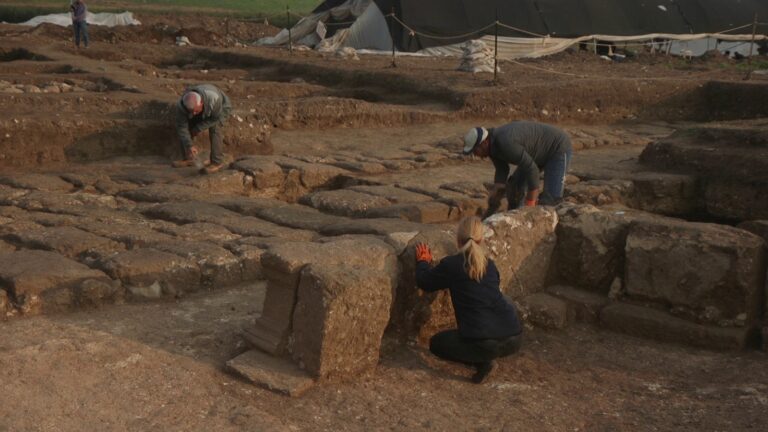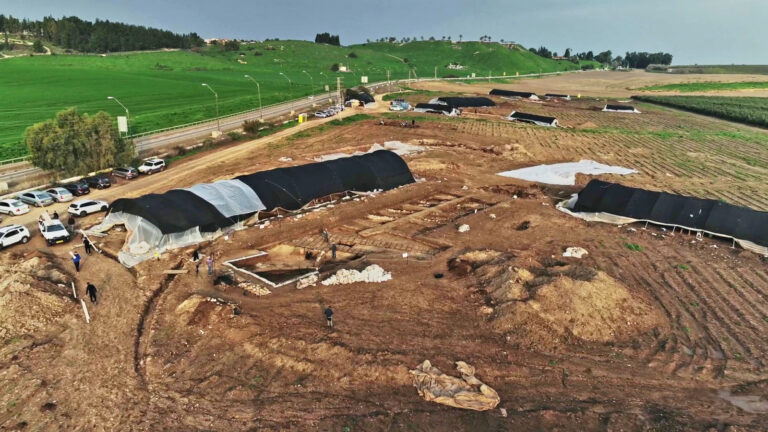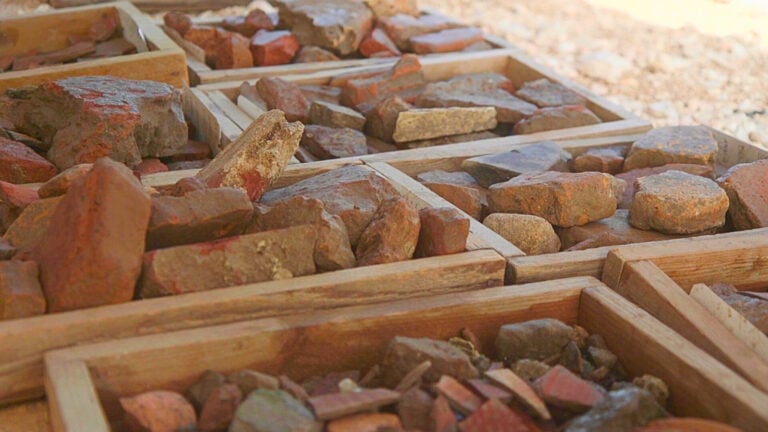Thousands of soldiers left remnants of coins, weapons, pottery, glass and tiles at the foot of Tel Megiddo, the legendary Armageddon.
Remains of the largest Roman military base ever found in Israel have been discovered under a northern kibbutz wheatfield at the foot of Tel Megiddo, the site of the biblical Armageddon.
Over 5,000 soldiers from the Legio VI Ferrata (Sixth Ironclad Legion) were stationed here between 120 and 300 CE.
The discovery was made during an excavation as part of a $410 million infrastructure project to expand Road 66 by 15 kilometers from the Megiddo Junction to the Hatishbi Junction at Yokne’am.
Remains of the 12 meter-wide Via Pretoria (the main road of the camp) were uncovered, as well as a semicircular-shaped podium and stone-paved areas which were part of a large public building.

“There is an entire archeological assemblage that allows us to understand how the Roman military presence existed during the day of [Hadrian] during the second and third centuries,” said expedition leader Yotam Tepper, an archeologist at the Israel Antiquities Authority.
The Legio army base, in what was then the Roman province of Syria Palaestina, was built at strategic crossroads along the ancient Via Maris trade route.
“Two main roads intersected at the center of the 550-meter-long and 350-meter-wide camp, and its headquarters were erected here,” Tepper said. “It was from this base point that all the distances along the Roman Imperial roads to the main cities in the north of the country were measured and marked with milestones.”

Archeologists have also found coins, weapons parts, pottery shards, glass fragments and a huge number of tiles used for roofing buildings, paving floors and coating walls, some of which were stamped with the legion’s name.
Tepper elaborated on the identification process of the found artifacts, noting: “The technology and knowhow, the building techniques, and the weapons that the Legion brought with it from the home country, are unique to the Roman army, reflecting specific Roman Imperial military footprints.”

Experts had already known of the camp’s existence, but it wasn’t until 2010 that they were able to confirm its location near the ancient village of Kfar Othnay using ground-penetrating radar.

“Whilst Roman military camps are known in Israel, they are temporary siege camps, or small camps belonging to auxiliary divisions,” Tepper said. “None compares with the entire complex of the legionary base, as has been uncovered in the archeological excavations at Legio, next to the Megiddo Junction.”
